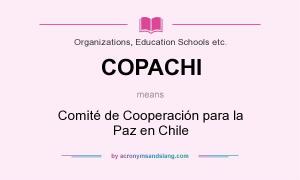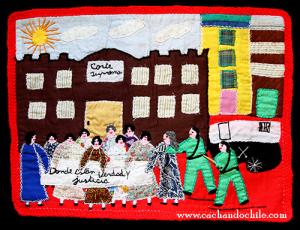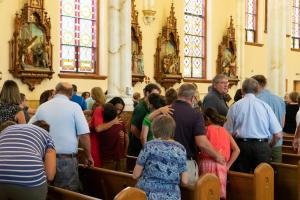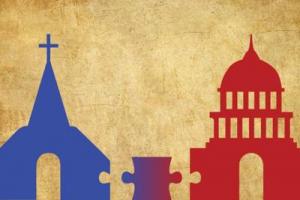Torture and Eucharist, Chapter Two: The Church Learns How to be Oppressed

William T. Cavanaugh’s second chapter in Torture and Eucharist is a history of the troubles of the people of Chile under the Pinochet regime. The plot of the story, however, revolves around the developing ecclesiology of the Chilean Church. Its concept of itself, its relation to the oppressed people of Chile, and its role in their world all changed in the years from the military coup in 1973 to the regime’s end in 1990. What further changes in ecclesiology may be necessary today?
On Chapter Two of Torture and Eucharist: Theology, Politics, and the Body of Christ. Fifth in the series on William T. Cavanaugh, a Catholic theologian who writes about the Church and its role in culture, politics, and economics. Introduction to Cavanaugh and links to blogs in the series as they appear are here.
The Church in Chile saw long itself as the conscience, or soul, of society, standing above the fray of politics. It encouraged all factors to act for the good of all. Eventually it came to see itself as, not just soul, but body too, a social body, the Body of Christ. In the early days of its relationship with the Pinochet regime, the Church saw itself as the Mystical Body of Christ. It wold be a union of “all Catholics, torturers and tortured alike, in spiritual, not bodily, union.” (96) Not yet did the Church see itself as incarnated in flesh, an extension of the first incarnation. Cavanaugh says,
If the church is [only] the soul of Chile, the military is its incarnation, its body. (p. 86)
It took harsh experience for the Church’s ecclesiology to change.
Church neutral toward the regime while helping victims
For a long time after the 1973 coup the bishops of Chile kept to a neutral stance with respect to the Pinochet regime. It had done the same under Allende’s Popular Unity, socialist government. They condemned violence and urged cooperation and peace. An too spiritual ecclesiology and the fear of being charged with political meddling kept them from a more effective stand. Meanwhile the regime was demonizing politics as such.
The church sought a mystical communion of Chileans above the party political fray; the military regime wanted to eliminate party politics altogether. (p. 85)
In the weeks after the coup tens of thousands were killed or arrested, thousands lost their jobs, and many went into hiding. The church was the only civil institution that survived the regime’s onslaught against any possible organized threat. Daily people by the hundreds came to the offices of the cardinal archbishop of Santiago. Cardinal Silva formed the Committee of Cooperation for Peace in Chile (COPACHI) to coordinate assistance efforts. (p. 87)
While these efforts continued, the bishops urged Catholic groups to suspend meetings and follow the new restrictive laws. They believed by cooperation and diplomacy they could have more influence with the government.
A half year after the coup there was no change in the regime’s attacks on perceived enemies. The bishops began to “navigate dangerous waters of confrontation with the regime.” (p. 92) They expressed their “concerns” about fear and insecurity, increasing poverty and unemployment, and changes in school curriculum. These concerns, however, were placed in the context of respect for the regime’s “good will.” The bishops echoed state propaganda about “the previous regime’s chaos” and “armed resistance against the current regime.” At that time armed resistance was minimal. (p. 93) The bishops were too timid to mount an effective challenge.
Finally opposing the regime: a secretly taped off-the-record comment
Those who carried out the regime’s policies, whether soldiers or members of the security apparatus, were Catholics. As members of a “body,” the army or the state, they had to obey orders. Though these orders might conflict with church teaching, the Church couldn’t impose the same sort of discipline as the army. The church does not control the person’s body but only speaks to his conscience. For individual soldiers, “the necessities of the body overruled the misgivings of the soul.” (p. 97)
For two years after the coup, the country’s bishops were unwilling to jostle that soldier’s conscience too vehemently. They denounced torture, to be sure, but never publicly and explicitly claiming that torture existed. A bishop’s off-the-record, frank comment, secretly taped by a Bolivian newspaperman, changed that.
Bishop Carol Camus, September 30, 1975, expressed privately what most bishops were feeling. He blamed the regime for a “climate of hate.” Church-state conflict, he said, “is the result of the church’s defense of the poor and persecuted against the ‘brute force’ of the regime.” (p.98) These secretly taped comments didn’t stay secret. Soon a storm of protest from the government and state-controlled media burst forth. The bishops backed Camus.
The following month saw another dangerous incident for the Church. Priests and sisters were assisting the escape of some members of the imperiled Revolutionary Left Movement. The regime publicly attacked the church and accused the hierarchy of communist sympathies. The regime’s chief legal adviser, a Catholic, denounced the church’s policy of offering mercy to all regardless of political beliefs. He insisted that all good Catholics “turn in anyone fleeing from justice, even if they seek the protection of the church.” (p. 100-101)
Excommunication
The bishops reacted swiftly, threatening to use the one power that they had—excommunication. A new period of confrontation had begun. COPACHI stepped up its activities to the point where the police arrested 10 of its functionaries. Pinochet demanded that COPACHI disband. Since this was an association with both Catholic and Protestant members, Pinochet had legal means available if the church refused. The Cardinal Silva complied.
The regime’s security apparatus soon became even more aggressive, and the cardinal reacted with another tool. This would be an entirely Catholic “Vicariate,” directly depending on the archdiocese and harder for the government to interrupt. Silva reportedly told Pinochet, “You can’t interfere with the Vicariate! And if you try to, I’ll put the refugees under my bed if necessary.” (p. 103)
Throughout 1976 church-state relations went further downhill. In August three Chilean bishops were returning from a conference in Ecuador. Actually, they’d been imprisoned along with bishops from other countries. Released the following day after a storm of international protest (but not from Chile), they returned to Santiago. There a demonstratiion met them with shouting and shoving and a hail of rocks and no intervention by the police.
A response by the bishops showed they finally realized it was a hostile power they were facing. The bishops abandoned generalities. They identified agents directing the airport mob, and named two newspapers and a TV channel. Their coverage had colored the bishops as traitors. The bishops declared that the incident was part of a pattern of abusive actions by the government. They invoked the power of excommunication again, this time not just as a threat. It applies automatically, they said, for violence against a bishop, referring to Canon Law.
Changing ecclesiology and redefining what counts as religion
Cavanaugh notes that what moved the bishops to act was hostile action directed against them, against the hierarchy. They hadn’t seen the disappearances, torture, and deprivation of rights of all Chileans as attacks against the church. Nevertheless, they finally saw themselves as suffering in solidarity with those others. Their statements have changed from exhortation to condemnation. As this chapter’s title says, the Church was learning “how to be oppressed.”
They also took on delicate matters of political parties, freedom of expression, and the economic situation, chastising the regime for the lack of opportunities and the undue burden the poor bore under the economic policies of the regime’s ‘technocratic elite.’ (p. 107)
The separation between the spiritual Kingdom of Christ and the material, political kingdom of this world still held sway in bishops’ thinking. But “from this point on, what counted as ‘politics’ underwent something of a redefinition.” (p. 109) The bishops laid more emphasis on the “visible and communal aspects of the Church.” Since the church is “entrusted by Christ not with ‘souls’ but with ‘men,’ nothing human can be alien to [her].” (p. 110) It was a significant turn in the Chilean Church’s ecclesiology.
In December 1980, after torture was again on the rise, seven bishops issued a decree of excommunication for those responsible.
Excommunication is an exercise of church order which makes, however temporarily and faintly, the true church visible as an alternative society of peace and justice where torture has no place. (p. 117)
The division between religion and politics had made the political realm safe for the regime in power. The bishops of Chile had to re-imagine the categories religion and politics.
The Church is a social body. Is it more than that?
Over the first 10 years of General Pinochet’s reign of terror, the bishops of Chile gradually shifted their ecclesiology, their thinking about the church. No longer could the church be just the soul and conscience of society, speaking with a voice from the centers of church hierarchy. When the people suffered, the bishops came to see, it was the Church that was suffering. The church is a social body, an extension of Christ’s incarnation of God in the world.
In the face of constant accusations of interfering in politics, the church gradually made clear its refusal to leave bodily matters such as employment and torture to the state – in other words, to hand over the bodies of its members to the state. (p. 120)
The Church in Chile had learned to be oppressed with its people. Today it occurs to me to wonder: Does the body of the Church extend only to people? Of the many forms that oppression takes in this world, surely an attack on the natural environment is one. Can the Church see that it suffers also with the earth?
Image credit: acronymsandslang.com via Google Images












